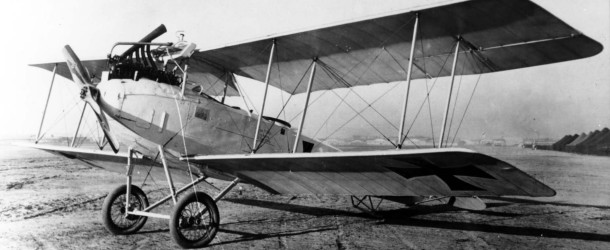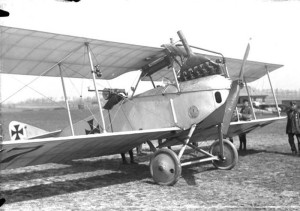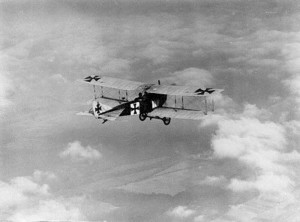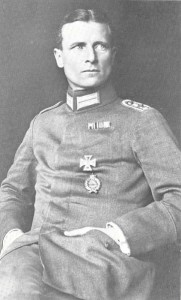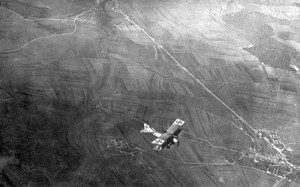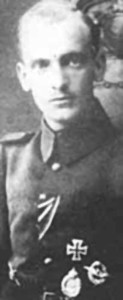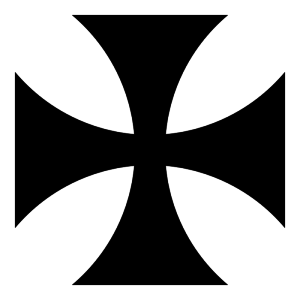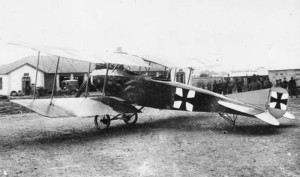And let’s close this series of articles about the new WW1 Wings of Glory Airplane Packs series presenting the Albatros C.III, one of the German two-seaters most used during the war, gloriously piloted by many aces of German Empire.
Built by Albatros Flugzeugwerke, the general purpose Albatros C.III was a improved version of the successful Albatros C.I and was eventually produced in greater numbers than any other C-type Albatros. It was used in a wide variety of roles including observation, photo-reconnaissance, light bombing, and bomber escort.
The C.III, as was the C.I, was a well-constructed aircraft, maneuverable, fast and well-armed. In comparison with the C.I, the C.III had a rounded tail instead of the large, triangular tail of the C.I, that granted a higher agility to the aircraft. The engine installed on this aircraft was a 110 kW (150 hp) Benz Bz. III or an even more powerful 120 kW (160 hp) Mercedes D.III inline engine, characterized by the cylinder head and exhaust manifold that protruded above the front fuselage, restraining the forward visibility for the pilot.
The C.III was originally designed to be armed with a single flexibly mounted machine gun, but it soon gained a fixed forward firing LMG 08/15, without any significant reduction in performance. This made it one of the first German C class aircraft to carry such a gun. The observer, in the rear cockpit, was armed with 7.92 mm Parabellum MG14 machine gun. Some C.III aircrafts were fitted with an interrupter gear and a single forward-firing 7.92 mm LMG 08/15 machine gun.
Thanks to these characteristics, the C.III proved to be a valuable aircraft for the German Air Service, undertaking a variety of roles beyond reconnaissance flights. To acquit its light bombing role, the C.III was outfitted with up to 200lb of internally-held drop stores for light bombing, and its machine guns could also strafe unprotected ground targets. Its awesome construction made this aircraft an efficient military instrument which carried it till the final days of war, a real rarity for early-war biplanes. Many “survived” the end of the war and were forced to be handed over to the Allies for destruction or reissue to allied nations.
The first C.IIIs were recorded at the front in December 1915, and the number increased throughout 1916, reaching a peak of 354 aircraft at the end of August of that year. Albatros C.III was adopted during all the remaining years of war, and remained in use on secondary fronts after being withdrawn from the Western Front.
At least 2271 Albatros C.IIIs were ordered, with 800 used on the front line and the rest used as trainers. The C.III was used by a number of foreign air services, and remained in use after the end of the First World War. Among the Nations who use it were Russia, German Empire, Bulgaria, Finland, Latvia, Lithuania, Poland, and the Ottoman Empire.
Albatros C.III in Wings of Glory
In Wings of Glory, the Albatros C.III is featured in three versions: two used by the German aces Erwin Böhme and Emil Meinecke (assigned to the Turkish air force), and an aircraft used by the Luftstreitkräfte. The C.III planes use the Y maneuver deck, a deck with not so many available maneuvers, but functional. It lacks in speed, but this gives the advantage of a short turning radius.
Erwin Böhme
Erwin Böhme was born in Holzminden and became one of the most famous German aces of the war, credited with 24 victories. He flew together with other great German aces, such as Oswald Boelcke and Manfred von Richthofen. After his engineering studies, he had many adventurous experiences in Europe and Africa. He was a great athlete, superb in ice skating, swimming, and climbing. To arrive in Genoa, where there was a ship that would take him to conduct in Africa, he crossed the Alps, starting from Bern in Switzerland, reaching the Italian port on foot, traversing the Matterhorn.
He stayed in Africa from 1910 to 1914, working for a German lumber and agricultural company, helping to construct the cable railroad from Usambara (Tanzania) to New Hornow, used to ship cedar to the lumber mills in Germany, for pencil production. In 1914, Böhme returned to Europe to ski on the Alps, but WWI exploded and he returned to Germany to enter military service.
Böhme asked to be transferred into aviation, and even though he was not young, thanks to his aggressive spirit and for his physical abilities, he became an aviator. He was assigned initially to Doberitz, then to Lindenthal for flight training. He became the best of his class and was chosen as instructor for one year, till he was assigned to an active unit as an Offizierstellvertreter. He joined Kampstaffel 10 in France, commanded by Wilhelm Boelcke, in December 1915 and his Albatros C.III had a ferocious dragon and a reptilian monster painted on the two sides of the fuselage.
In April 1916, Böhme entered into his first dogfights against French Farmans and Nieuport scout. In May 1916, he had gathered a lot of experience in aerial warfare, having completed several defensive patrols and bombing missions, and he was promoted to Leutnant der Reserve. He scored his first victory on the Russian front, where his squadron was transferred in August 1916. He flew an Albatros C.III, and he shot down an ace of Imperial Russian Air Service, Podporuchik Eduard Pulpe of the Imperial Russian Air Service.
After this victory, Böhme was transferred to Jasta 2 under Oswald Boelcke, a real ace and the one of the greatest tactician of German aviation. Boelcke could recruit every pilot he wished, so he had under his command both Manfred von Richthofen and Böhme, eventually becoming best friends with Böhme. Under Boelcke command, Böhme became a true ace, achieving five victories within two months.
And then came the fatal October 28th of 1916, when Böhme, Boelcke, von Richthofen, and three other pilots from Jasta 2 attacked two DH-2. During the air fight, Richthofen was trying to shoot down a British plane but an interposing German plane obstructed him, while Böhme and Boelcke were too close and Boelcke had to maneuver to avoid a collision with that enemy. Unfortunately, Bohme’s aircraft, during the sudden maneuver, hit the top wing of Boelcke plane. Boelcke with his great piloting skills could crash land successfully but he had not fastened his seat belt and the impact killed him. Böhme survived the accident, suffering light wounds for the landing. After the landing, Böhme was in such despair and was saved from a suicide by the words of Manfred von Richthofen who talked him down while he had a pistol in his hand.
Böhme returned to duty and during the following months, he achieved several victories, eventually suffering a wound at his left arm. By April 1917, he wrote home that only he and Manfred von Richthofen were left alive from the original Jasta 2 founder members of 1916. In August, he suffered another injury at his right hand, but he recovered and in October he brought his total amount of victories to 21.
He next scored victories on 6 and 20 November, 1917. On the 24th, he was awarded the Pour le Mérite, the German most important decoration. On 29 November, Böhme took off on his last mission, shot down by veteran pilot Captain John Patten above Belgium territory. Oberleutnant Erwin Böhme's body was recovered from the wreckage and buried with full military honors by the British.
The Albatros C.III Bohme airplane pack includes an Ace Card with the "Perfect Aim" skill.
Emil Meinecke
Emil Meinecke was born 20 July 1892 in Mannheim, Germany. He began his flying training under the pioneer flyer Karl Jathro in 1910, who taught him to fly after introducing him to aircrafts mechanics. Meinecke was, in fact, very familiar with airframes and engines.
When World War I began, he enlisted in the German Imperial Air Service, but he hadn't achieved his flying certificate, and was sent for training. In July 1915 he obtained his Military Pilot's Certificate, and was assigned in Berlin as a flying instructor.
In October 1915, Meinecke was sent to train Turkish aviation cadets in the Ottoman Empire, and in April 1916 he was assigned to Feldflieger Abteilung 6, also known as the Jasta Chanak Kale—Turkei, at San Stefan. He scored his first victory on January 27, 1917, shooting down a B.E.2c, flying a Fokker Eindecker. He scored other five victories until April 28, 1918, fighting against Greek Air Services and Royal Naval Air Service at the German-Turkish Jasta.
Meinecke was awarded the Ehrenbecher, the Iron Cross 2nd and 1st Classes, the silver service Medal of Baden, the Silver Medal of Fredric-Karl of Baden, and the Silver Medal for Bravery of Baden. His Turkish awards were the Turkish pilot’s badge, the Gallipolis Star, the Silver Liana with swords and the Silver Empties.
After the war, he became a professional mechanic for Fokker, working in Netherlands and traveling for work all around the world.
During World War II he remained in the Netherlands, serving as a ferry pilot and test pilot for Fokker. After the war, he worked again as a mechanic, and in 1950 he emigrated to Canada becoming a Canadian citizen in June 1956, and dying in Ontario in 1975.
The airplane pack featuring Meinecke's C.III includes an Ace Card with the "Weapon Specialist" skill.
Luftstreitkräfte
The third Albatros C.III featured in Wings of Glory is an aircraft used by the Deutsche Luftstreitkräfte (German Air Force) without an identification of group or squadron. The air arm of the German Army at World War 1, Luftstreitkräfte was known before October 1916 as the Fliegertruppen des Deutschen Kaiserreiches (Imperial German Flying Corps). Aircrafts, observation balloons, and Zeppelins were also in use by the Marine-Fliegerabteilung, a separate military branch.
During the war, Deutsche Luftstreitkräfte utilized several kinds of aircraft: fighters (Albatros, Fokker, Pfalz and Siemens-Schuckert), reconnaissance aircraft (Aviatik, DFW and Rumpler), two-seat fighters (Halberstädt), heavy bombers (Gotha and Zeppelin-Staaken), and airships (Zeppelin). By the end of the war, Luftstreitkräfte possessed a total of 2,709 aircrafts, 56 airships, 186 balloon detachments and about 4,500 flying personnel.
After the German defeat, Luftstreitkräfte was dissolved completely on 8 May 1920 under the conditions of the Treaty of Versailles, which ordered the destruction of all the airplanes.
The Luftstreitkräfte's Albatros C.III Airplane Pack represents one of the hundreds C.IIIs employed in multiple tasks and different theathers during the WW1. It's not linked to any ace, so it can be played with a regular crew, or with a rookie pilot and/or a rookie observer, thanks to two additional cards which feature these crew skills. The Rookie pilot is less skilled so he is not able to fire just after a difficult maneuver, and is slower to fire and unjam the machine gun, and the Rookie observer is slower to unjam and fire the rear machine gun.
Information sources: History of War, Military Wiki, Military Factory, The Aerodrome, Wikipedia, As Peter Pan, Vintage Aero Flying Museum, Wikimedia, Rosebud’s Early Aeroplanes and Airships, Photobucket, Avia Dejà Vu, Pulp Alley, Turkey in the First World War, Vintage Aero Flying Museum. .

